Visiting Hakone in Winter: Hot Springs, Hiking, & Amazake
9 min readThinking about visiting Hakone in the wintertime and wondering what to do, wear, and more? If so, you’re in the right place! When you see photos of Hakone in spring...
The post Visiting Hakone in Winter: Hot Springs, Hiking, & Amazake appeared first on Bucketlist Bri.
Thinking about visiting Hakone in the wintertime and wondering what to do, wear, and more? If so, you’re in the right place!
When you see photos of Hakone in spring or fall, they beckon you with imagery of blue skies with a clear view of Mount Fuji, rivers framed by cherry blossom trees in full bloom, and top attractions without a tourist in sight.
The reality of Hakone is much different, however. And winter in Hakone—the off-season—while not the most popular time to visit, might end up being the best!
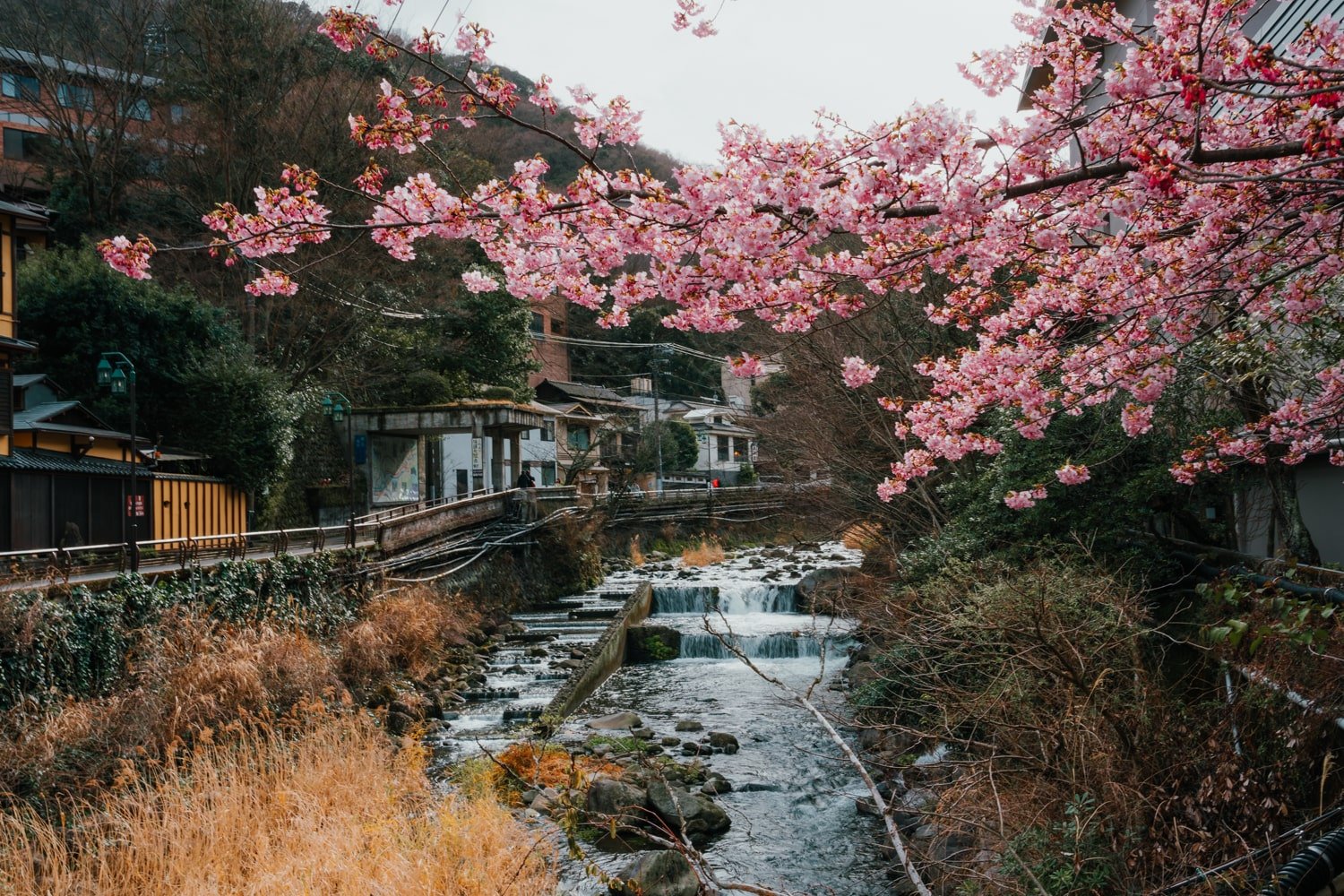
Disclaimer: This post contains affiliate links that may earn me a small commission should you decide to click through and make a valid purchase (at no extra cost to you). Thanks so much for your support!
For starters, the winter months might be the best time of year to savor the delicious heat of Hakone’s famous outdoor hot springs (onsens).
But relaxing in an onsen isn’t the only thing to do in Hakone in winter!
I visited Hakone in February and it was a delight.
There were fewer crowds than in spring (albeit still long queues for top places to eat, etc.) and the weather was nice and cold (but without freezing temps or big snowfall)—ideal for a wintery getaway!
Here is a quick guide for what to do, where to stay, what to pack, and what to expect from a Hakone winter vacation! ❄️
show
The Ultimate Guide to Hakone in Winter
🏡 Stay: Book your Hakone ryokan with an onsen in advance (months, if possible!)
🚙 Getting around: You don’t particularly need to rent a car to visit Hakone in winter. Instead, you can get around with public transport via the Hakone Freepass (buy an e-voucher on Klook)
📱 Data abroad: Easily get data in Japan with a 1GB or 2GB Japan e-sim with Airalo
Things to Do in Hakone in Winter
Soak in Hakone’s hot springs
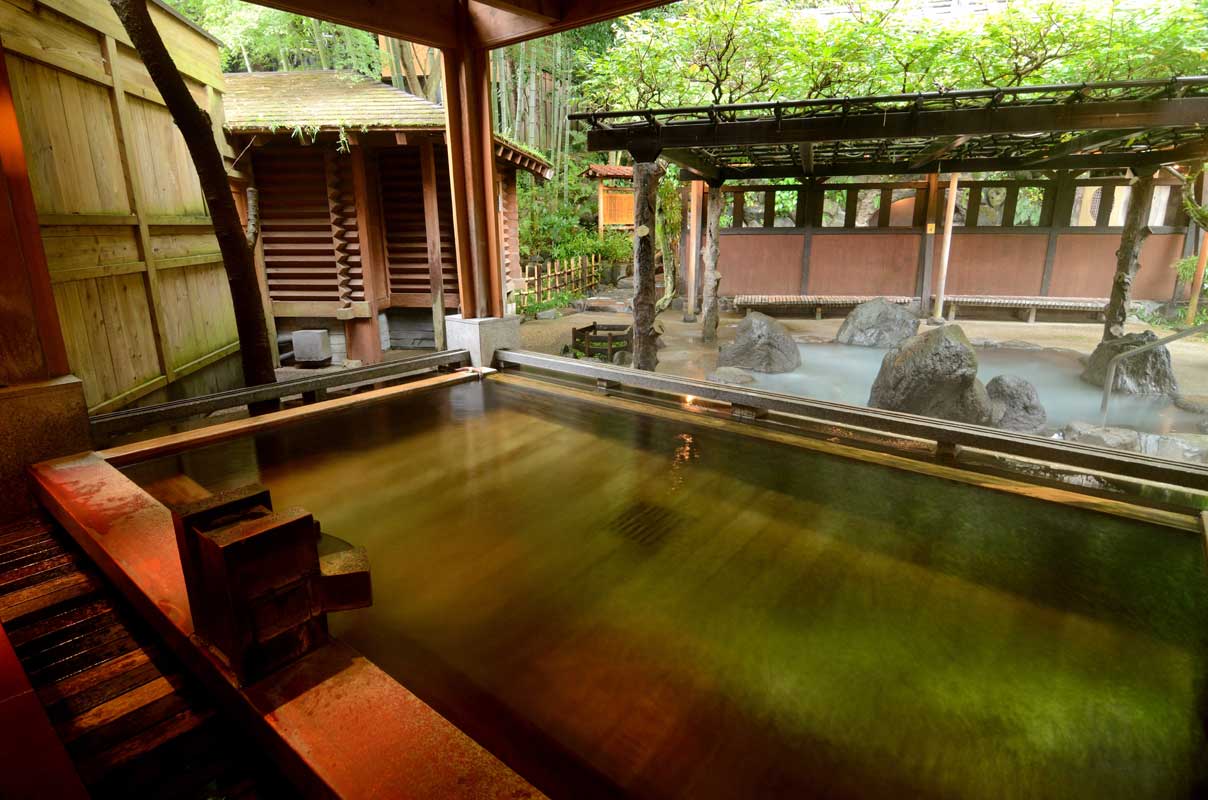
The first and best thing to do in Hakone in winter is enjoy one of its beautiful onsens (duh!!).
Onsen culture in Japan is so experiential and is a must-do when traveling in Japan.
And seeing as Hakone is one of the most well-known onsen towns in Japan, you have to get over any naked shyness and give it a go!
While many of Hakone’s top-tier onsens are owned by the ryokan inns and hotels, there are several public onsens where you can go even as a non-guest or daytripper.
I recommend the Tenzan Onsen as they are tattoo-friendly, plus the hot springs vary in temperature and each “pool” is beautifully landscaped!
Other popular onsens in Hakone include:
- Hakone Yuryo is perhaps the most popular choice for tourists but it is not tattoo-friendly! There is a free shuttle you can take from Hakone-Yumoto station to get here.
- Hakone no Yu (not tattoo-friendly)
- Natural Onsen Izumi
- Yu no Sato Okada
- Komorebi no Yado Furusato
- Kappa Tengoku
Onsens in Hakone are a must-experience year-round, but they are particularly satisfying in wintertime when you’re chilled to the bone and just want to heat up. Just thinking about it gives me goosebumps!!
Go on a Hakone winter hike
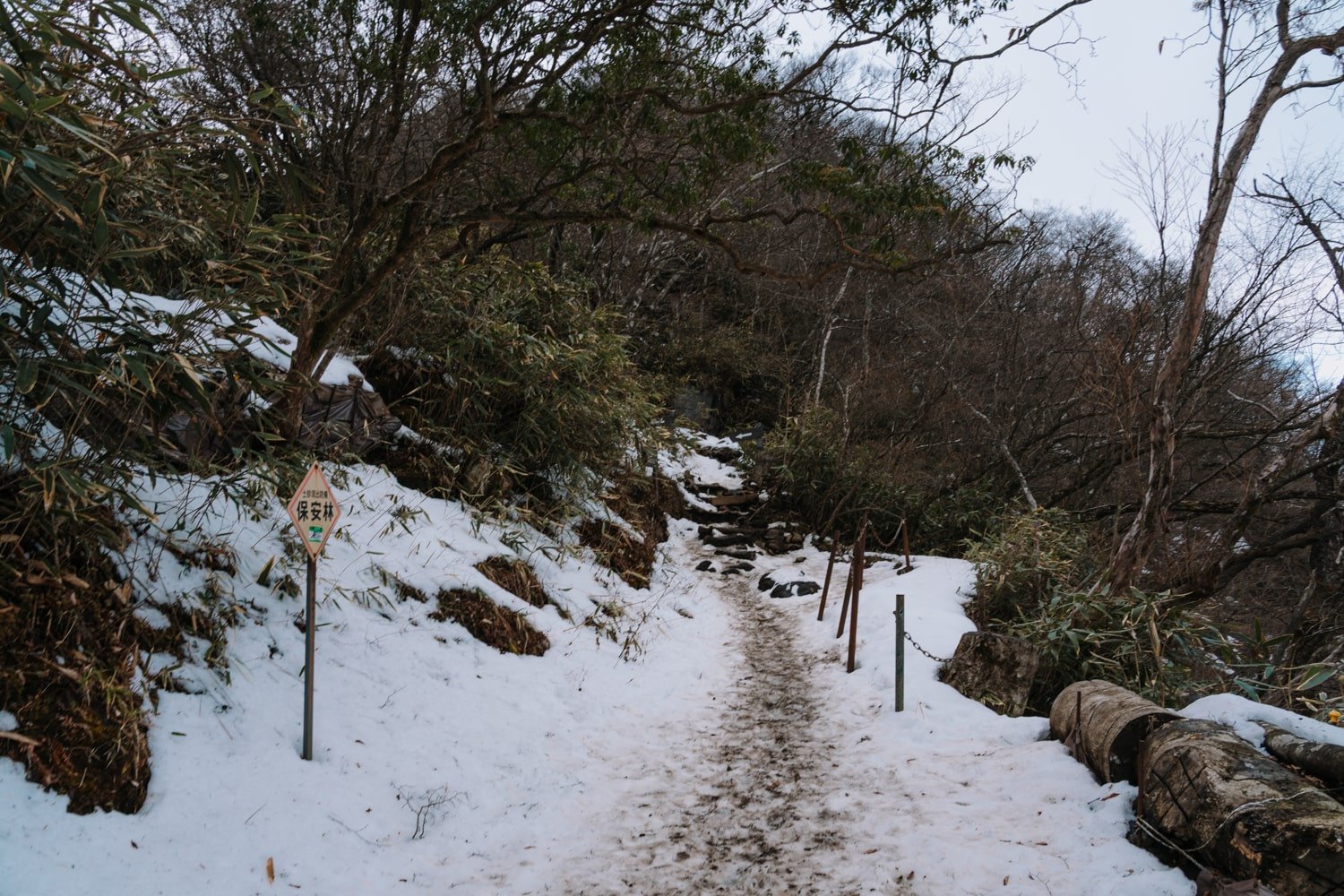
Hakone’s weather in winter gives way to (mostly) clear skies, which makes it a great time of year to go hiking.
Rain and snowfall are common in Hakone during the winter months, but not frequent, so while the weather forecast can be a bit of a “wild card” you should expect a few mixed cloudy/sunny days.
According to Hakone Japan, the average temperature in Hakone in winter ranges from 0-3°C. December, January, and February also see the lowest amount of rain.
The fact that it rained on my hike in February was a bit unlucky! Especially because the day started beautifully.
As for hikes to do in Hakone in winter, there are a few but you’ll have to check the weather forecast in advance and be prepared.
I suggest doing either the Mt Kintoki summit hike (2-3 hours roundtrip) for the best views of Mt Fuji on a clear day.
Otherwise, for a bit more of a historic and cultural hike, I recommend doing the Old Tokaido Highway Trail which leads me to the next thing to do…!
Drink a delicious cup of amazake
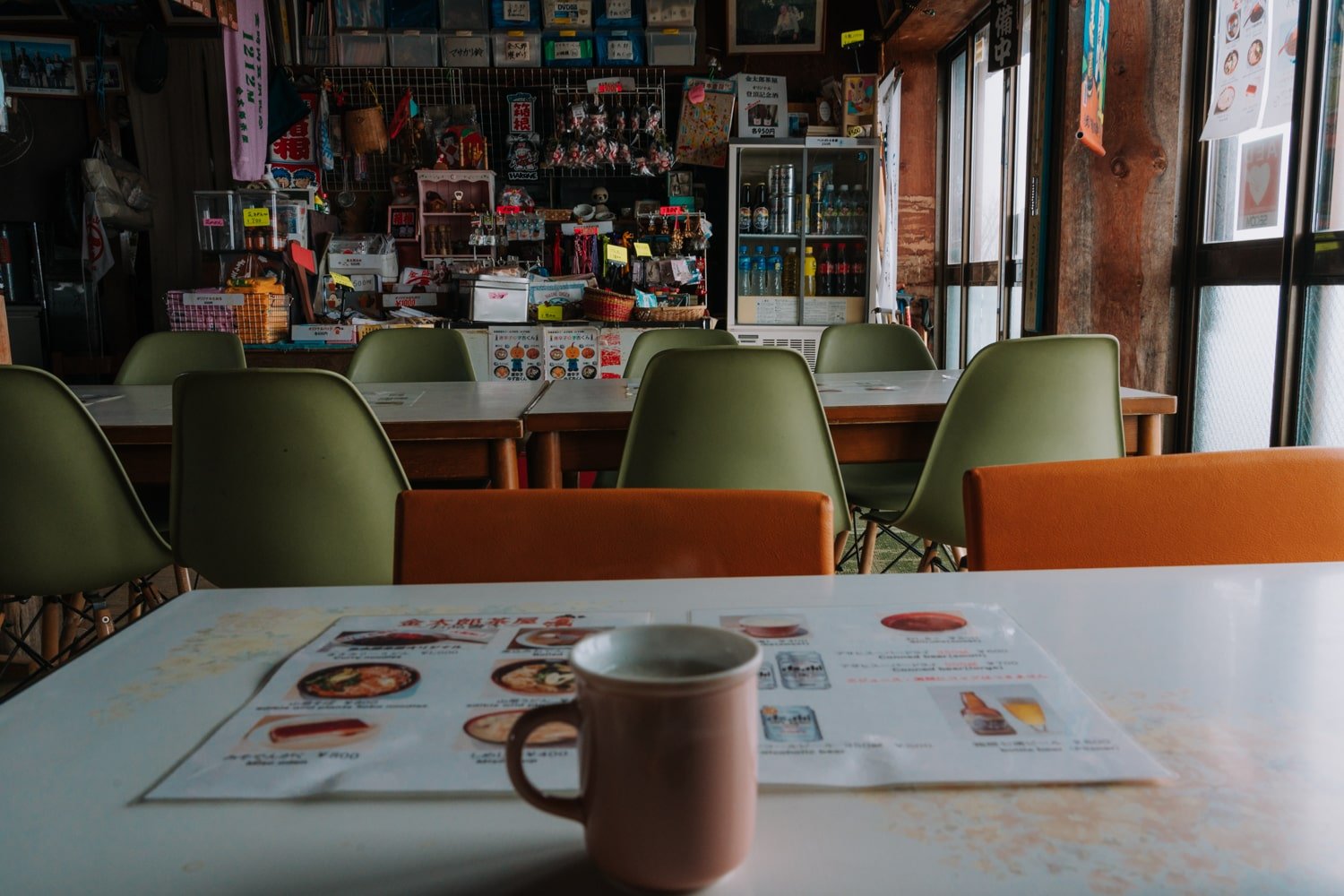
Whether you hike the Old Tokaido Highway or not, you should try amazake—a sweet, non-alcoholic fermented rice drink.
In Hakone, in particular, you’ll find the 400-year-old Amazake-Chaya Teahouse where you can drink amazake and taste hot mochi.
The amazake brewed here is an original recipe dating back centuries to the Edo period when samurais and travelers would take the highway and stop through for a rest.
If you end up doing the Mt Kintoki hike, you can also try amazake inside the summit teahouse there even though it’s not the same experience as what the Amazake-Chaya teahouse offers. The hot sweetness of the drink warmed up my soul and prepared me for the hike down!
Amesake is the perfect wintertime beverage to enjoy in Hakone.
Tour one of Hakone’s indoor museums
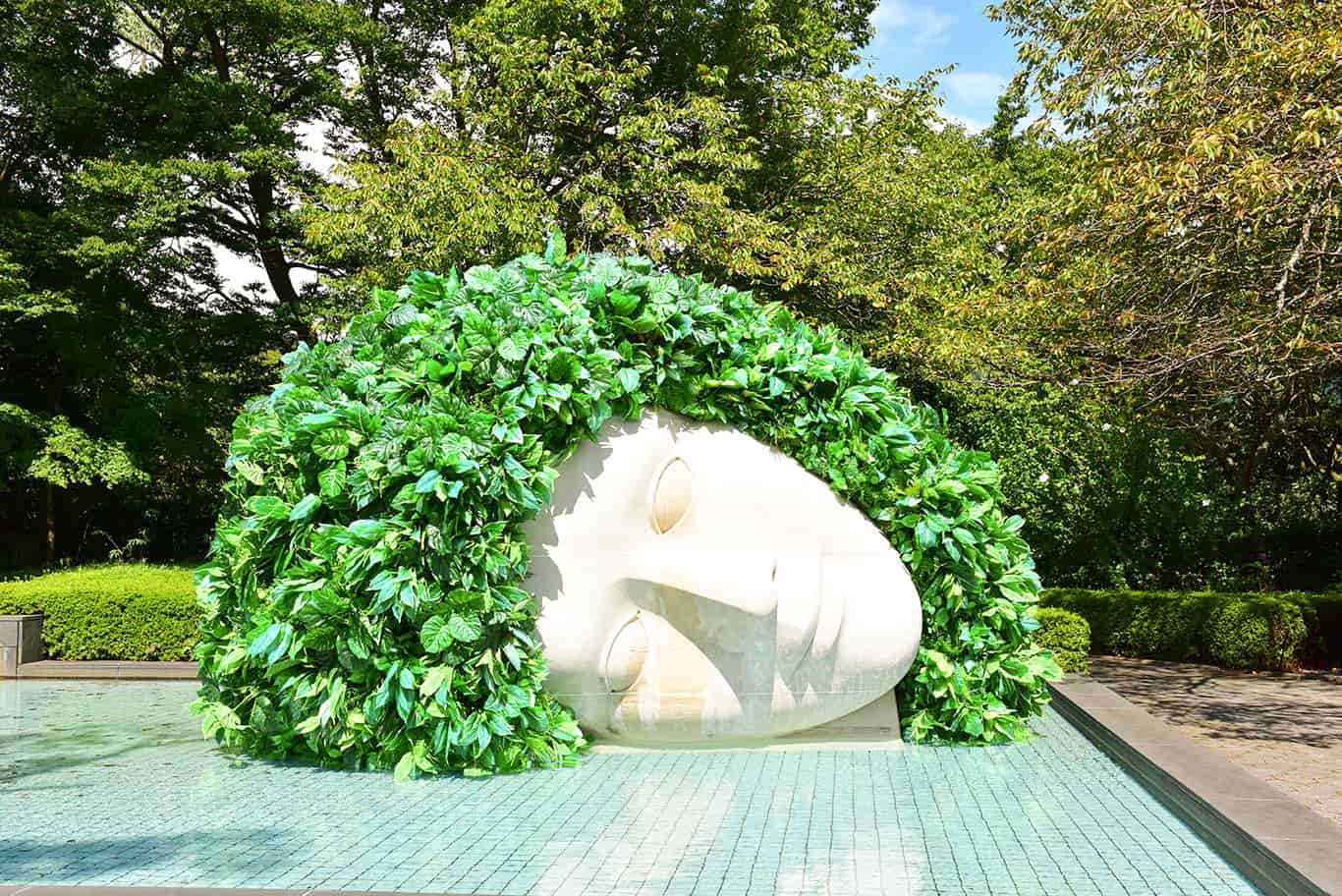
In case you do get caught in the rain or snow, Hakone has multiple museums worth visiting.
Most notable are:
- Hakone Venetian Glass Museum
- Pola Art Museum
- Hakone Open-Air Museum (which kinda requires good weather unless you pack an umbrella and a warm coat)
- Okada Museum of Art
- Narakuwa Art Museum
Write a wish at the Hakone Shrine
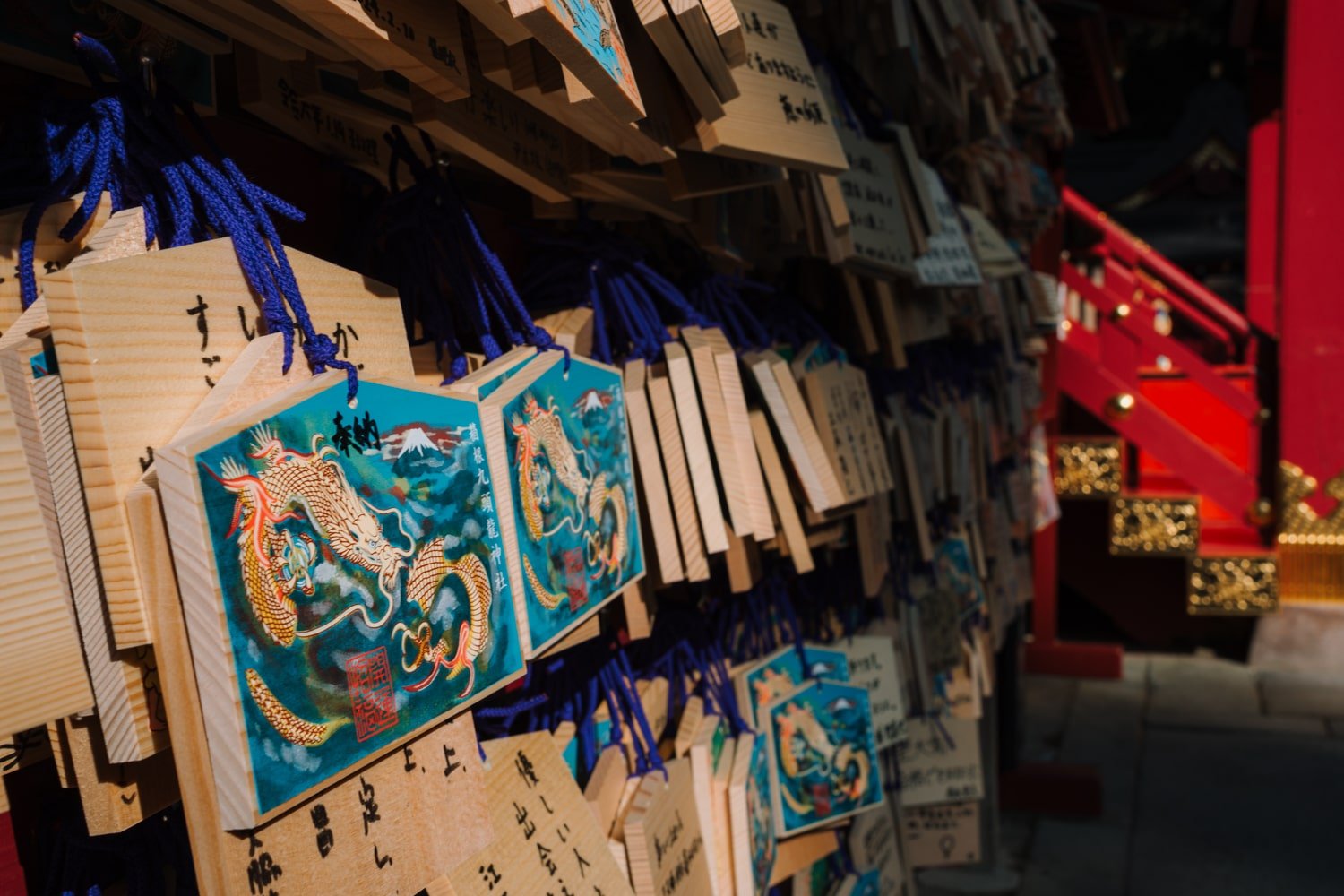
One of the top places to visit in Hakone—winter or summer and snow or shine—is the Hakone Shrine (Kuzuryu Shrine).
The Hakone Shrine is a Shinto shrine dedicated to Kuzuryu, meaning “Nine-Headed Dragon.” To pacify the dragon, you must pay your respects! 🐉
The shrine’s history is long and varied, dating back to more an 1000 years, but in short tells of a monk who came to pacify Kuzuryu by chaining him to the rocks under Lake Ashi.
Later, it became a refugee for Minamoto Yoritomo (who established the Kamakura Shogunate ((1185 to 1333)) thus becoming a sacred site for samurais and an important historical marker in Japan’s history.
I have visited several Shinto shrines in Japan now and this one is particularly mystical and has a special energy about it!
PS — The Kuzuryu dragon is still celebrated today so if you are visiting Hakone in late January–early February, you might get to see fireworks for the Japanese Setsubun celebrations (on February 2nd, 3rd, or 4th).
Save for later: Is the Lake Ashi boat cruise worth it? Read my guide for details!
Read & relax inside a cozy coffee shop
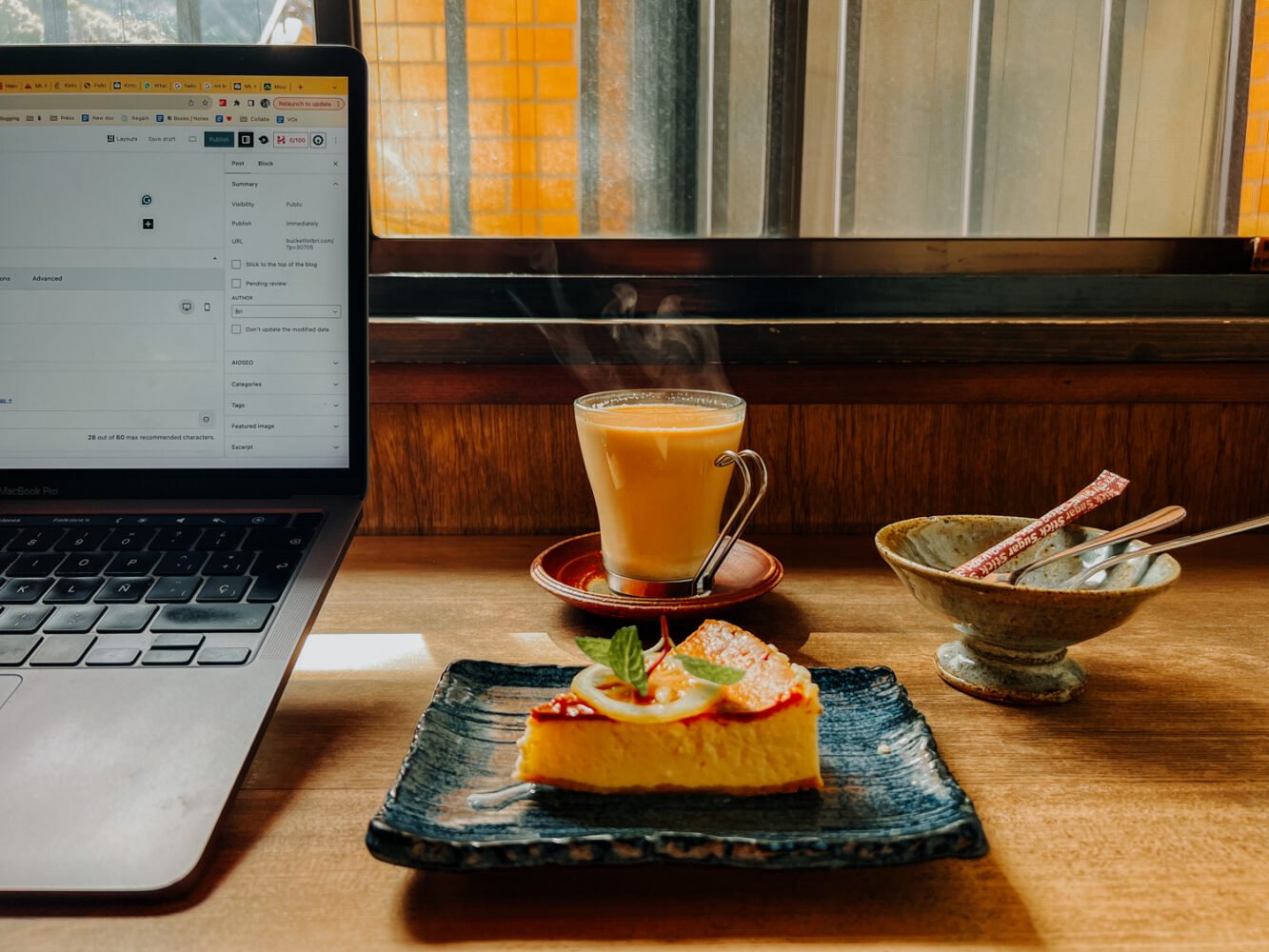
When the weather outside is too frightful, my go-to is to duck inside a cozy coffee shop and spend my time reading, writing, or journaling.
There are not too many cafes in the Hakone area where you can lounge for a while, but I found Café Timuny in Hakone-Yumoto to be one of the best (or at least, exactly what I needed!).
With delicious cheesecake and coffee, and comfy sofa chairs, this is the ideal coffee shop to enjoy the gray rainy-day atmosphere of Hakone.
Warm up with a piping-hot tofu soup
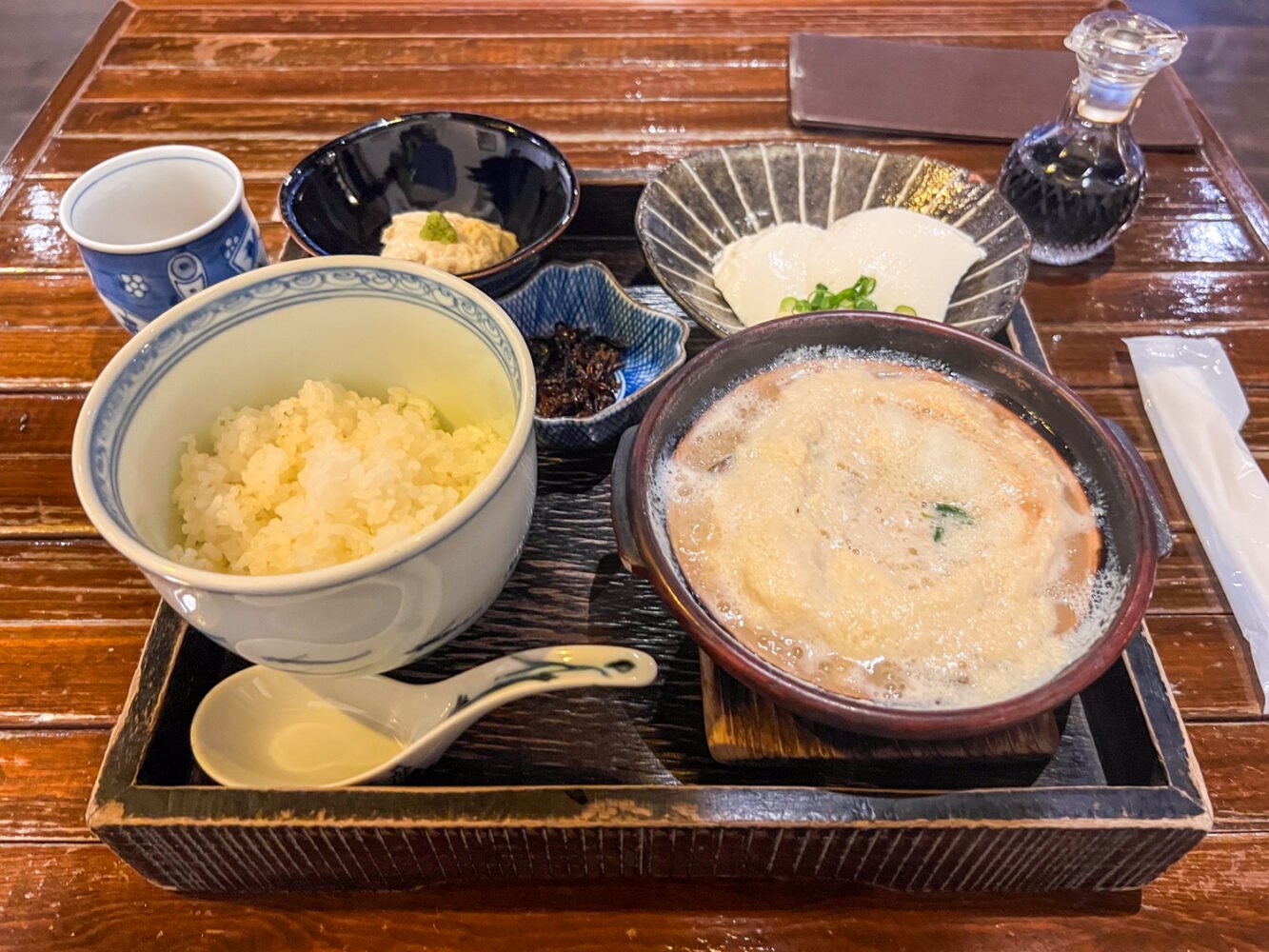
Another top-notch eatery in Hakone-Yumoto is none other than Yubadon Naokichi.
Yuba is a Japanese delicacy and you can try it right here in Hakone! Yuba refers to the “skin” that forms on top of soy milk when it is boiled. It is also called tofu skin or beancurd skin.
This restaurant not only serves its signature Yuba soup made with Mt Hakone water but also serves other tofu delicacies.
The soup—and tofu side dishes—are a welcome treat that not only warms you up on a cold day but also takes you on a gourmet tongue-dive into Japanese cuisine.
I ordered the “soymilk skin omelet combo” (¥1,800) which came with the skin omelet fish-based soup, a side of cold tofu with green onion and ginger, soymilk skin as “sashimi” rice, and hot tea.
Ride the Hakone Ropeway + try a black egg
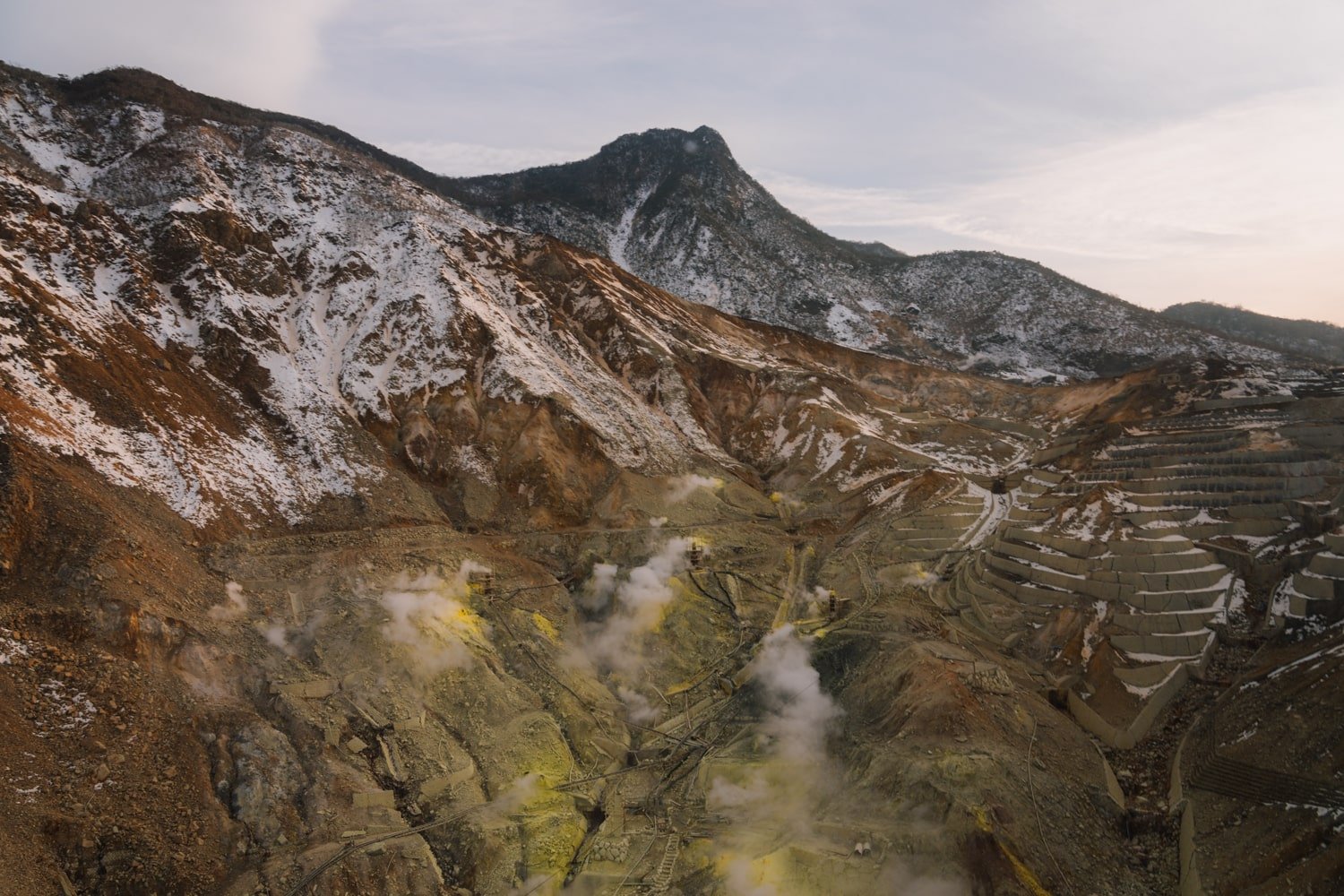
Whether it’s winter or not, riding the Hakone Ropeway is one of the top things to do.
⚠️ However, in winter, note that the ropeway sometimes closes for maintenance and/or due to poor weather. It was closed two days during my three days in Hakone so I was glad I did it when the weather was nice on my first day. If this is the case, there will be an alternate bus option to take to continue the sightseeing loop.
In any case, the ropeway ride takes you in an aerial tram across from Togendai to Owakudani, where you can see sulfur vents from volcanic activity.
The smell outside is a bit repugnant, but not too overpowering!
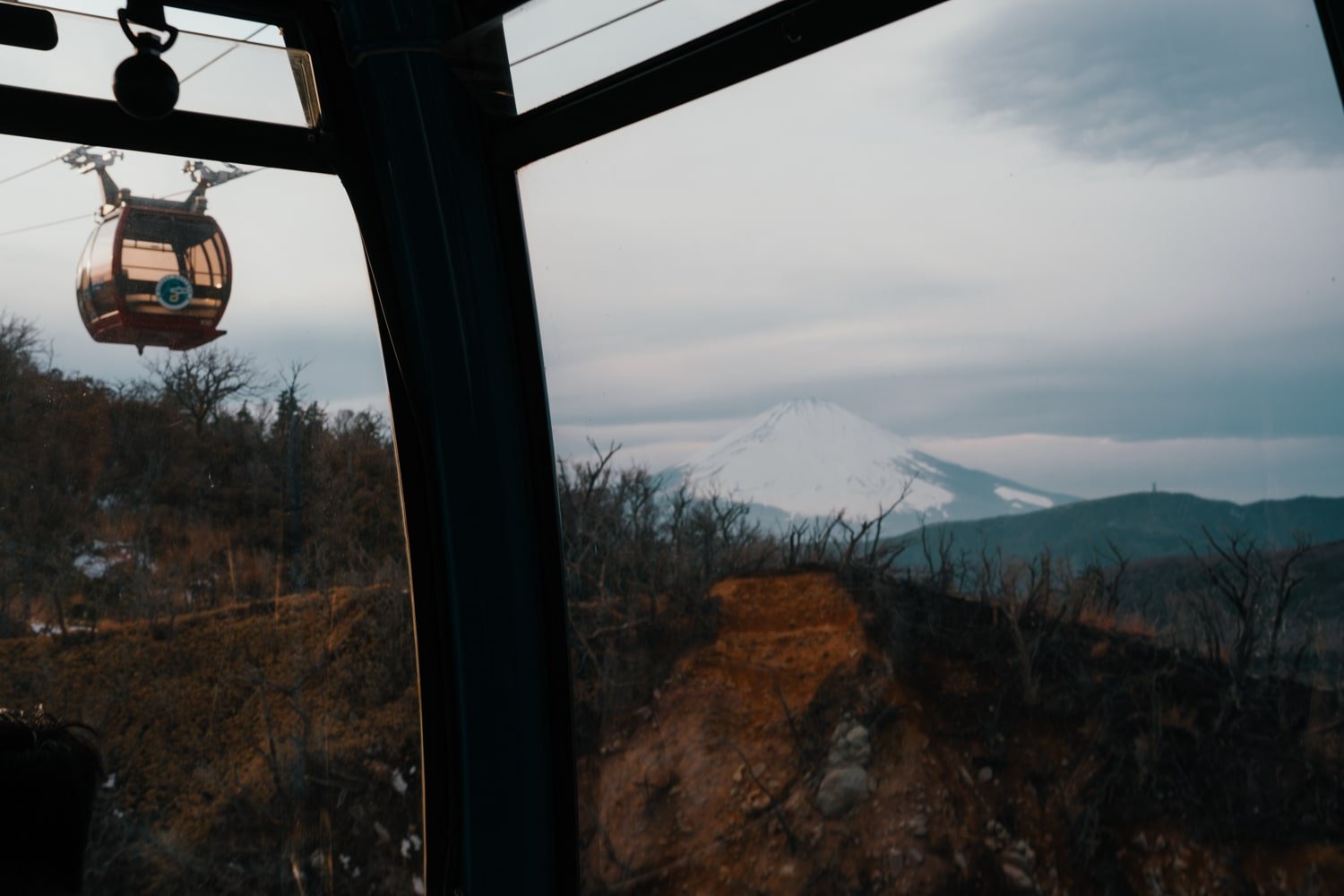
While here, you can visit the tourist shop to buy and try the famous Owakudani black egg which is said to give you seven years of good luck! The black egg of Hakone is just a normal egg cooked for one hour in the local hot springs.
The eggshell turns black but the egg tastes, well, like a normal egg! 🥚
You can only purchase a package of four eggs for ¥500 (not single eggs). I wonder, does eating all four quadruple your seven years of good luck?!
Where to Stay for a Magical Winter Vacation in Hakone
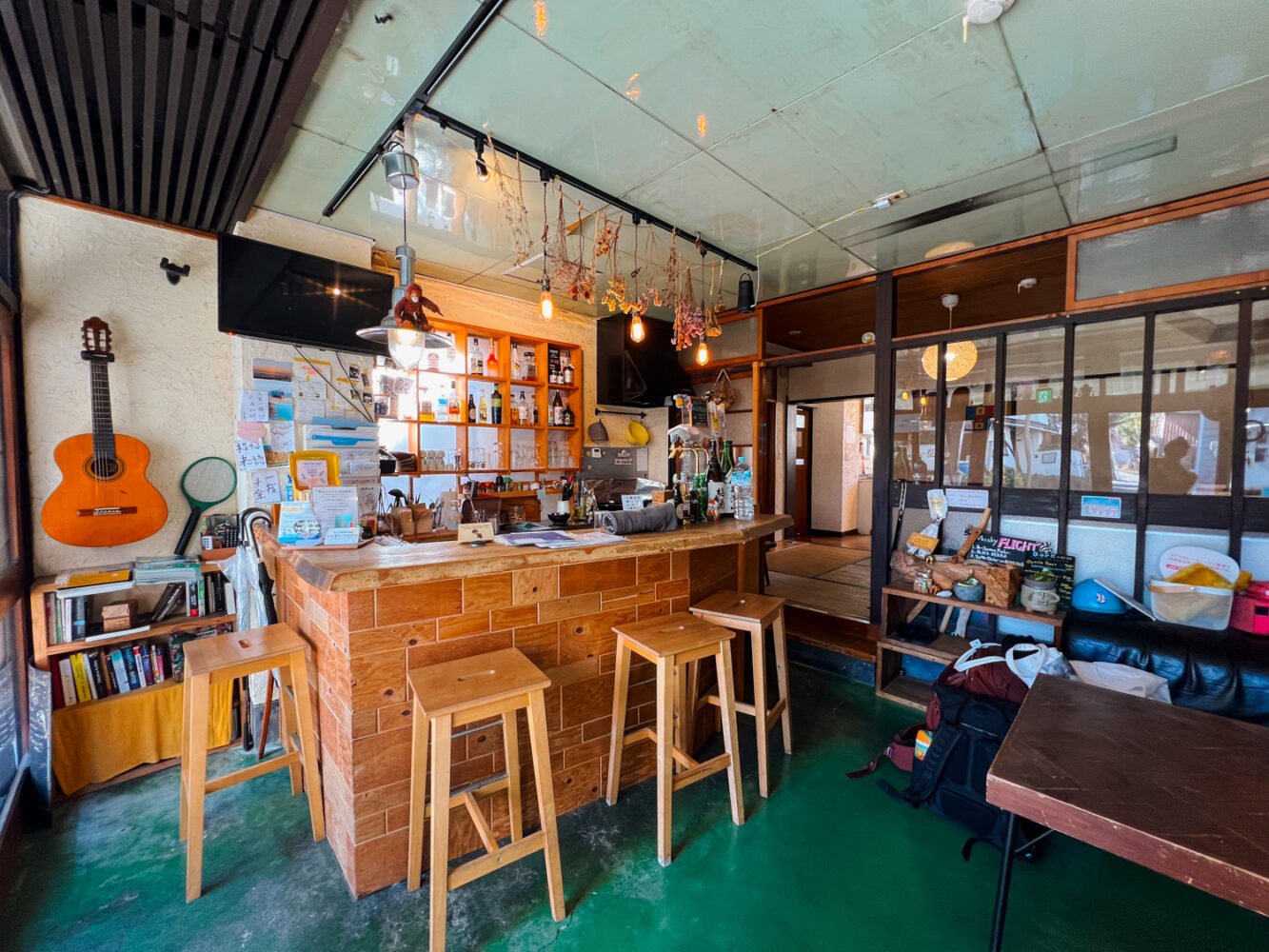
If this is your one shot to visit Hakone, then I would splurge and stay in a traditional Japanese ryokan inn with an onsen.
While you can save money by staying in a hotel without a hot spring, staying in a ryokan with a private onsen is kind of the thing to do here—that is if you have the budget!
If not (and if you’re solo traveling like me), then you can find accommodation in Hakone for as low as $30/night and just visit one of the public onsens in Hakone instead (cost ¥1,300 – ¥2000).
I will say that I didn’t feel like I was missing out on the full “Hakone experience” by not staying in a ryokan. But, again, if this is your Japan vacation and you want to go all out, then a ryokan in Hakone is a must!
Here are the top recommendations for a winter stay in Hakone:
🎒 Budget Core:
✨ Boutique / Mid-Range:
💎 Luxurious / High-End:
While these are all great places to stay, you should also consider your Hakone itinerary and what exactly you wish to do while you are here.
Hakone-Yumoto and Gora are the two best and most convenient towns/places to stay in terms of location. That said, double-check where your hotel is located in Hakone before booking!
What to Pack & Wear for Winter in Hakone
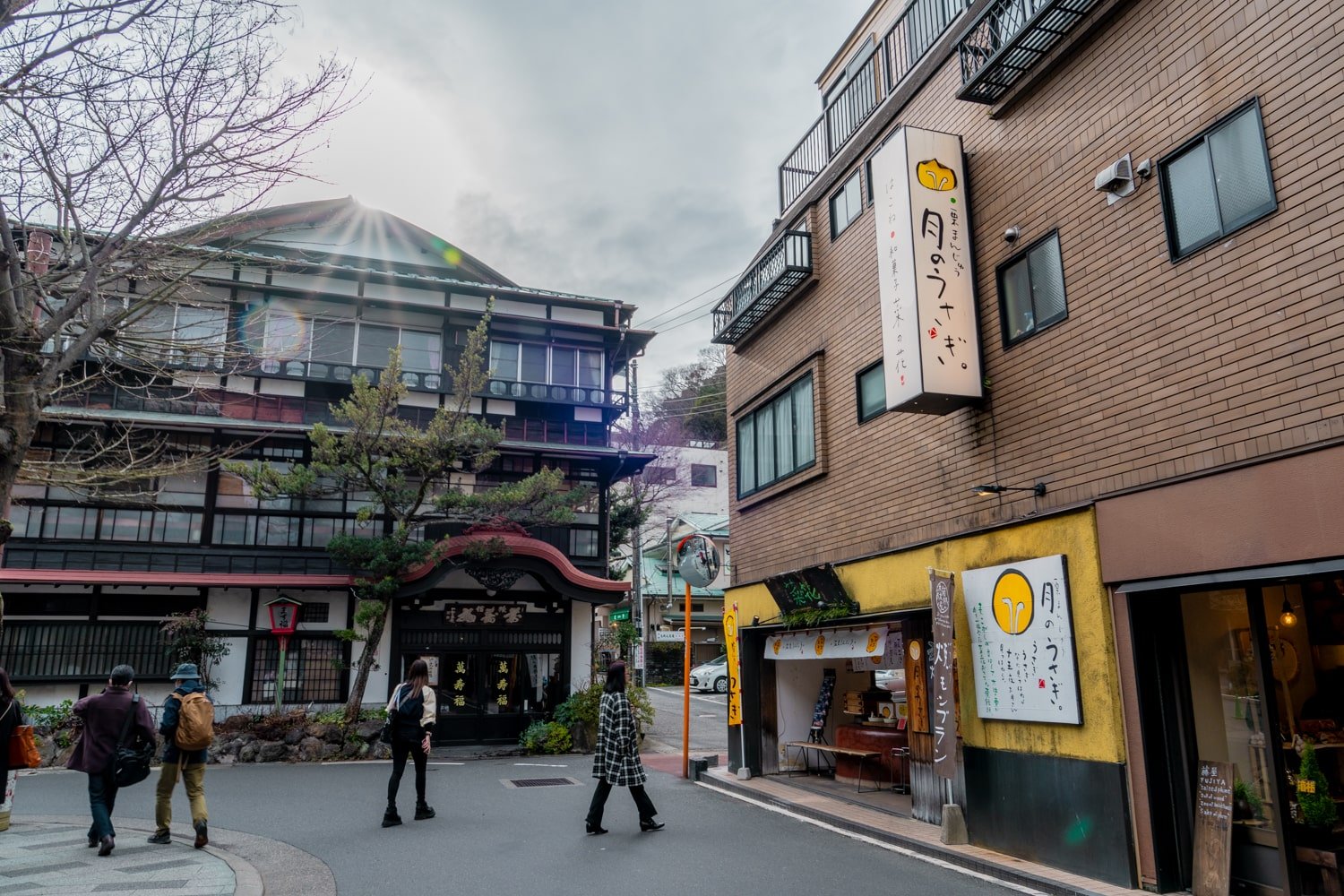
Don’t underestimate the weather when visiting Hakone. After all, you’re in the forest and mountains of Japan, and it can get COLD!
Since you’ll be exploring on foot a lot and transferring between public transport, it’s best to pack light but warm.
I always recommend packing layers.
For Hakone, pack an umbrella or rain jacket. My Patagonia Torrentshell 3L was perfect for staying dry on my hike up Mount Kintoki.
What you need to pack also depends on what you plan to do, so if you do plan to summit Kintoki then packing hiking shoes or boots is wise. (Although I did this hike in sneaks and was fine!)
Pack and prepare for bad weather but hope for good weather. ☀️
For a 2-3 day or weekend trip to Hakone in the winter, consider packing:
- 1 warm winter coat (the long trench coats are fashionable here)
- 1 rain jacket (or umbrella, but I prefer jackets)
- 2 pants
- scarf + hat + gloves
- good walking shoes (+ trail boots if you plan to do a bit of hiking)
- 2 long-sleeves
- 1 warm sweater
- reusable water bottle (it’s fine to drink tap water in Japan)
- camera + any photography gear
- phone (download an offline map or purchase a Japan e-sim for an easy way to get data)
Is Hakone Worth Visiting in Winter?
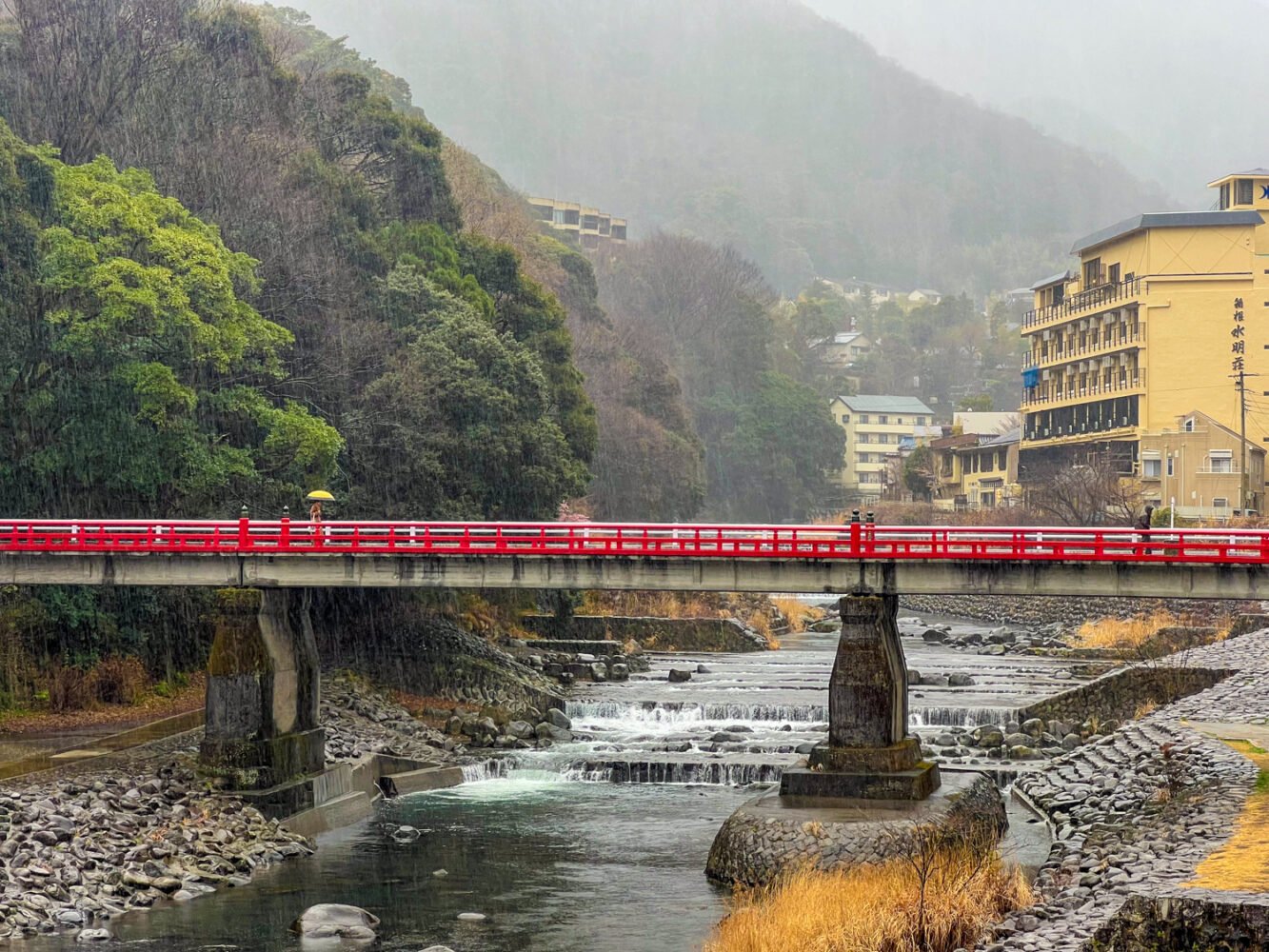
Yes! Hakone is worth visiting year-round, and even in winter. With (mostly) clear views, you will have a higher chance of seeing Mount Fuji unclouded.
Also, hot springs and winter are the best combination! Onsens and summer heat just don’t hit the same.
Let’s not forget another reason to visit Hakone in winter… fewer crowds. While there will still be a lot of people, it doesn’t compare to the springtime and autumn crowds.
The only real downside to visiting Hakone in winter is perhaps that there are no cherry blossoms or flowers in bloom yet, which often frame the Haya River in Hakone-Yumoto and make for a particularly aesthetic scenery.
<!–
–>


